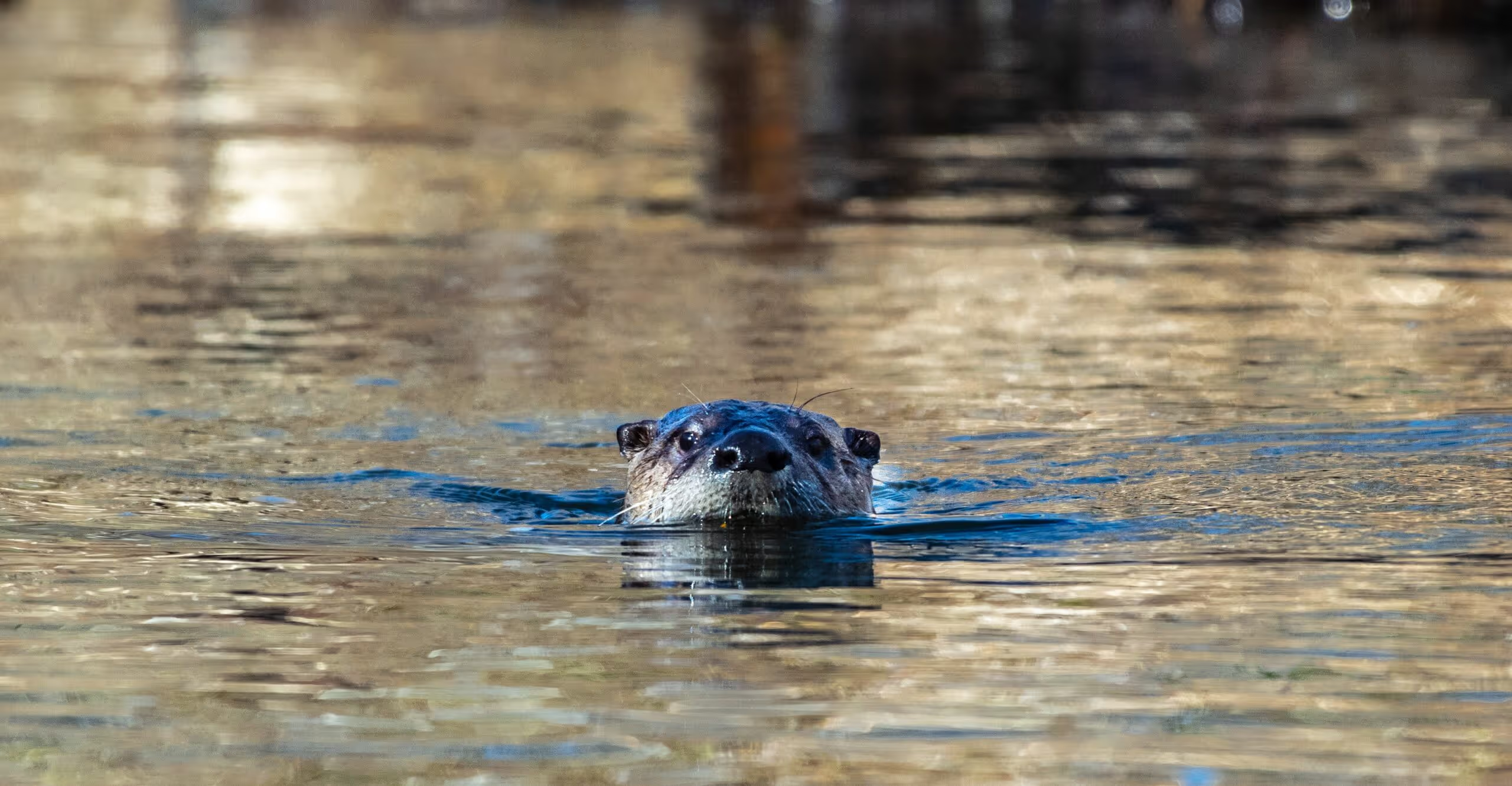All About Otters


Otters are members of the weasel family. They are “charismatic” creatures with short ears, long bodies, and soft, dense fur. (Fun fact: Otters are also known, rather unfortunately, for having particularly smelly poop, or “spraints.” The notable odor, which some scientists describe as similar to violets, comes from their diet of seafood. Perhaps this is a blog post for another day.)
Otters are members of the Mustelidae Family–other members include weasels, skunks, and other species. Otters were built to be strong swimmers, with short legs and webbed toes. There are 13 different species of otter, with two found in Washington State: river otters and sea otters.
How to Tell a River Otter from a Sea Otter
One easy way to tell a river otter from a sea otter is its size. Adult male river otters measure an average of four feet in length (including tail) and weigh between 20 and 28 pounds. Female river otters are slightly smaller than males. Sea otters are much larger, averaging two to three times the size of river otters. In addition to size, the tail is also an easy differentiator. River otters have long, streamlined bodies with tapered tails. Sea otters have shorter, flatter tails.
Location will also help determine if you are looking at a river otter or sea otter. In Washington State, sea otters can only be found, “from south of Destruction Island north to Cape Flattery, and east to Pillar Point in the Strait of Juan de Fuca,” according to the Washington State Department of Fish and Wildlife. Here in Ocean Shores, if you see an otter in the water, it is a river otter.
The rest of this blog post will take a closer look at our nearest neighbor, the river otter. You can learn more about sea otters in this blog post and our Olympic Coast National Marine Sanctuary exhibit.
Taking a Closer Look at the Lutra Canadensis, “Nature’s Fun-Loving Clowns”
River otters are common throughout Washington State in rivers, ponds, sloughs, and other waterways. They have long, thin bodies and can be seen in many waterways in Ocean Shores including canals, lakes, and even offshore on the coast. River otters are considered an “indicator species,” which means their presence is a sign of a healthy wetland.
River otters tend to live in pairs or solo, but they have active social lives. They are known for their playful behavior and have even earned a reputation as “nature’s fun-loving clowns.” River otters can often be spotted sliding down riverbanks, usually going back to the same chute time and time again. In addition to playing, they spend much of their day scent marking territory by “urinating, defecating, scratching, and rubbing their scent glands” on their surroundings.
Female river otters tend to build and maintain dens along riverbanks, in hollowed out tree trunks, and in old beaver dens. Pups are born in the spring. Although they are born with their eyes closed, they are naturally curious and are ready to explore their world within their first weeks of life.
River otters learn to swim at just two months old and spend much of their time thereafter splashing into rivers and streams. Pups will remain with their mother until the late fall when they leave to establish their own territories. In the wild, river otters can live up to 15 years.
Lisenbee, Len. “River Otters are Nature’s Fun-Loving Clowns,” Democrat & Chronicle, 2 August 2022: https://www.democratandchronicle.com/story/news/2021/08/02/river-otter-natures-fun-loving-clowns-size-habitat-facts/5419244001/. Accessed 4 December 2022.
“North American River Otter,” Smithsonian’s National Zoo and Conservation Biology Unit: https://nationalzoo.si.edu/animals/north-american-river-otter. Accessed 4 December 2022.
“Otters, Facts and Information,” National Geographic: https://www.nationalgeographic.com/animals/mammals/facts/otters-1. Accessed 4 December 2022.
“River Otters,” Progressive Animal Welfare Society: https://www.paws.org/resources/river-otters/. Accessed 4 December 2022.
“River Otters,” Seattle Aquarium: https://www.seattleaquarium.org/animals/river-otters. Accessed 4 December 2022.
“River Otter,” Washington State Department of Fish and Wildlife: https://wdfw.wa.gov/species-habitats/species/lutra-canadensis. Accessed 4 December 2022.
“Sea Otters,” Washington State Department of Fish and Wildlife: https://wdfw.wa.gov/species-habitats/species/enhydra-lutris-kenyoni#desc-range. Accessed 4 December 2022.
Photo by John Yunker on Unsplash
© Holly Duffy, December 2022
Touch whale bones, examine shipwreck artifacts and connect with the coast's living history.

Support our mission, get involved in educational programs, or contribute through donations and volunteering.